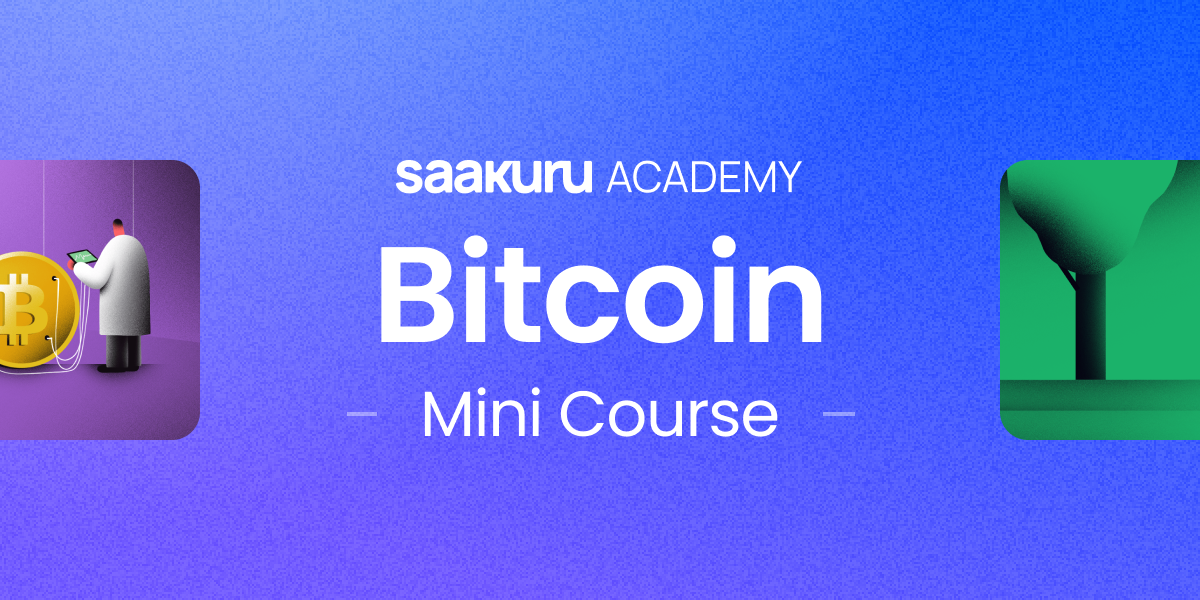
What is a central bank digital currency (CBDC)?
Almost all of the world’s central banks have been exploring digital currencies, or CBDCs. Some have even launched them, allowing citizens to make payments and acquire goods and services without the need for traditional fiat currencies, or even a traditional bank account. In some ways, CBDCs are similar to cryptocurrencies, but in other ways, they are very different.
In this AAG Academy guide, we’ll explain what CBDCs are, why they are being developed, and how they work. We’ll also look at how CBDCs compare to cryptocurrencies, and the different types currently being used.
What is a CBDC?
A central bank digital currency, or CBDC for short, is — as the name suggests — a form of digital currency issued by a country’s central bank. Although they share some things in common with cryptocurrencies, like the fact that they are entirely digital, their value is fixed by the issuing bank and corresponds with that of the country’s standard fiat currency.
According to the Atlantic Council, 114 countries around the world, representing 95% of global GDP, have begun exploring their own CBDCs. In fact, 32 are actively developing one, 18 are currently piloting one, and 11 have already launched an official digital currency. The Bahamas, Jamaica, and Nigeria are just some of the countries in which a CBDC is already in use.
Just like fiat currencies, CBDCs are considered a form of legal tender, which can be used to purchase goods and services. It does not replace traditional bills and coins — and it’s likely to be many, many years before that is even considered — but it exists alongside them as an official alternative for those who prefer an all-digital option.
What is the point of CBDCs?
Although physical cash is still widely used around the world, usage of it has declined in recent years — particularly during the COVID-19 pandemic. In many countries, electronic payment methods are becoming even more popular among large portions of the population, especially younger people, who prefer their convenience and immediacy.
This, according to some experts, has forced central banks to reevaluate their role in the monetary system. Meanwhile, cryptocurrencies have only grown in popularity. While they may have seemed like a passing fad in the early days, it is now clear that cryptocurrencies like Bitcoin and Ethereum are here to stay, and that they can serve a real and valuable purpose.
CBDCs are therefore a response to an evolving world that is relying on cash less and less, while interest in digital assets rises. Although there is still a long way to go for CBDCs, they could give central banks an opportunity to innovate and remain relevant. They could also help stabilize a world that is increasingly turning toward other digital payment mechanisms.
How does a CBDC work?
Much like cryptocurrencies, CBDCs are accessed via digital wallets, usually installed on smartphones, which can be used to make payments and transfers. Some are powered by private, permissioned blockchain technology, but others rely on other distributed ledger systems that allow all transactions to be recorded and verified for authenticity.
One of the most important things to note about how CBDCs work is that there is no standard or default system today. Due to the fact that these currencies are still very much in their infancy, most countries are still working to identify the best way to implement them, while those that already have are using their own systems that may not be ideal elsewhere.
For many central banks, one of the primary goals for CBDCs is to make payments easier, faster, and more affordable — particularly internationally. This would likely negate the need for some kind of standard eventually, or at least a way for various CBDC systems to communicate, but we’re not at that point yet. Again, most countries are still in the research or development stages.
What are the different types of CBDCs?
As things stand, there are two primary types of CBDCs, which are:
Retail
Retail CBDCs are the closest to fiat cash in that they are designed to be used by the general public for the same things traditional cash is used for. Within this category, there are two common types of CBDCs, which are token-based and account-based.
Token-based options are similar to cryptocurrencies in that they use public and private keys for validation, and allow much greater anonymity. Account-based options are much closer to the digital currencies we use today in that they require a formal account, similar to a bank account, for which every customer must be identified.
Wholesale
Wholesale CBDCs are used by central banks themselves, as well as select financial institutions, to settle large-value transactions, such as interbank transfers and securities transactions. They are similar to the central bank liabilities, or holding reserves, already used today.
Pros and cons of CBDCs?
One of the biggest advantages of CBDCs is that they provide the general public with a more direct line to central banks, and vice-versa. CBDCs can be issued directly to consumers, negating the need for a private bank to act as a middleman. This eliminates the risk of private banks going bust while they’re holding onto money owed to their customers.
CBDCs pave the way for faster, more affordable cross-border transactions, and a simpler financial system. They could also bring huge advancements and savings in areas like compliance, regulation, and security. Furthermore, official digital currencies solve the issue of accessibility by removing the need for a traditional bank account.
There are some downsides to be aware of as well, of course. Arguably the biggest one right now is that CBDCs, even in the countries where they are already in circulation, are a long way from replacing traditional currencies. You can be certain that if you hold a credit or debit card, it will be accepted almost anywhere, but that’s not the case for digital currencies.
What’s more, adoption and support are a small concern compared to the potential disruption CBDCs could bring to the financial systems we rely on today. It’s still unclear what the overall effects of CBDCs could be on the system’s stability, particularly for major economies, which is why they are yet to be adopted by any of the world’s biggest markets.
CBDCs also bring security concerns of their own. Although they could eliminate some of the risks we face today with traditional currencies, they have the potential to increase others — such as cybersecurity issues — and introduce new ones. In the cryptocurrency industry, attackers and scammers are constantly finding new ways to steal valuable coins and tokens.
CBDCs vs. cryptocurrencies
As we touched on above, some CBDCs have been heavily inspired by cryptocurrencies, while others, apart from the fact that they’re also entirely digital, are completely different. Regardless of how they operate, however, there are some major differences that CBDCs and cryptocurrencies will likely always have, such as:
- Centralization
Unlike most cryptocurrencies, CBDCs will be controlled and governed by central banks, so they won’t have the benefit of decentralization. Their value will also be set, rather than determined by things like investors and market interest. - Regulation
CBDCs will almost certainly be regulated in much the same way that traditional currencies are, which the cryptocurrency industry is currently immune to. - Anonymity
Although some countries are toying with the idea of token-based CBDCs that provide a level of anonymity, it’s highly unlikely that many countries will run with that option. After all, most countries want to be able to trace transactions for various reasons.
These are the biggest differences between cryptocurrencies and CBDCs today, but again, the latter is still very much a work in progress, and there is a lot we still don’t know about how they will be developed and used. With that being the case, there could be other big differences that surface between some CBDC implementations and cryptocurrencies later on.
References
- Central bank digital currency cbdc
- What is central bank digital currency cbdc
- What are central bank digital currencies cbdc
- What is a cbdc why central banks want to get into digital currencies
- Cbdctracker
Frequently Asked Questions
Some CBDCs have been developed around private, permissioned blockchain technology, but others rely on more traditional systems.
No. They are similar in some ways — both are entirely digital and rely on a distributed ledger of transactions — but very different in other ways, as we covered in the guide above.
The Bahamas’ Sand Dollar, Jamaica’s JAM-DEX, and Nigeria’s eNaira are some examples of CBDCs already in use today.
The fundamental features of CBDCs is that they are entirely digital, issued and controlled by central banks, and designed as an official alternative to fiat currencies that can be used in exactly the same way.
Disclaimer
This article is intended to provide generalized information designed to educate a broad segment of the public; it does not give personalized investment, legal, or other business and professional advice. Before taking any action, you should always consult with your own financial, legal, tax, investment, or other professional for advice on matters that affect you and/or your business.
Get news first
Be the first to get our newsletter full of company, product updates as well as market news.

















